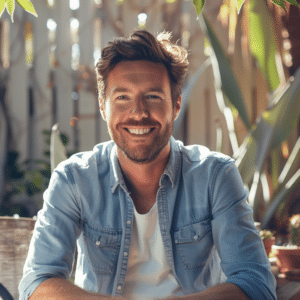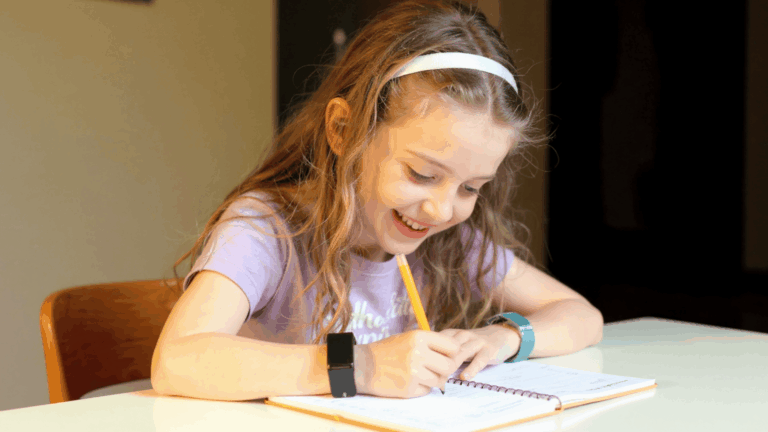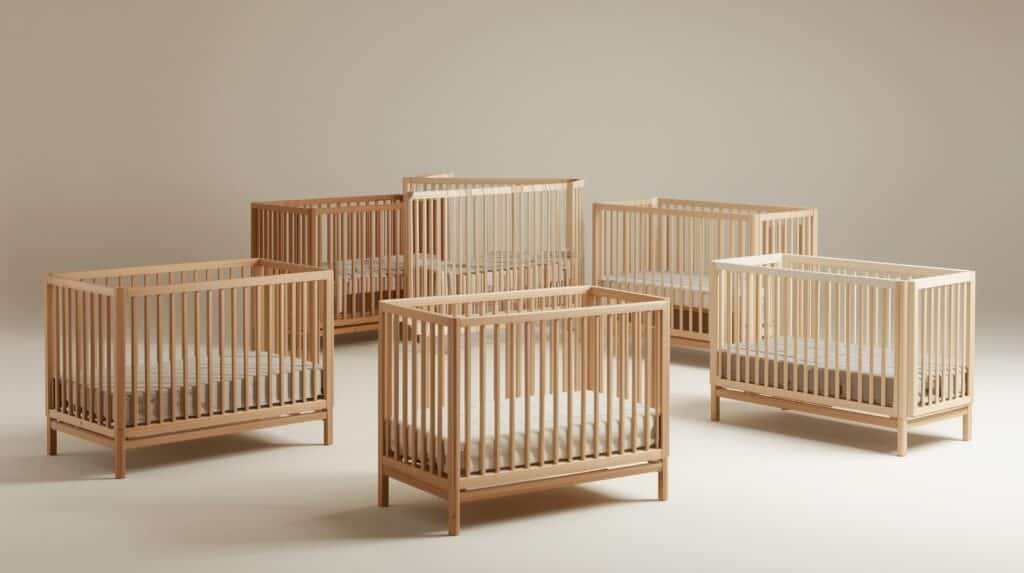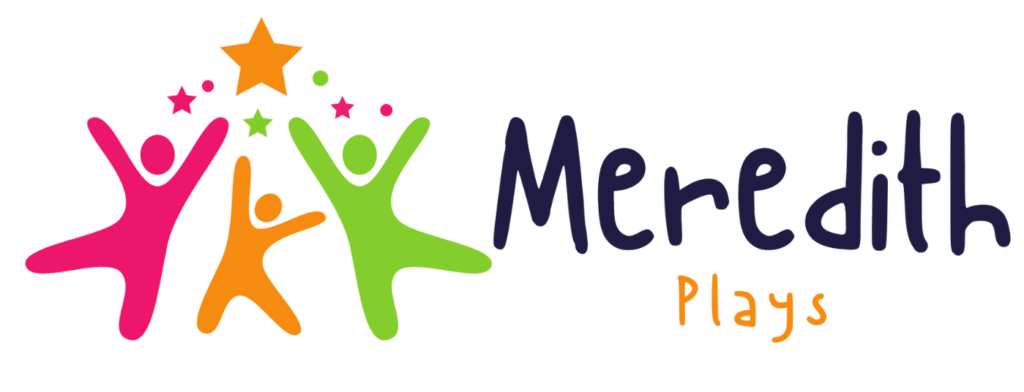Have you ever wondered how many bird species start with R? In the fascinating world of ornithology, each alphabet letter brings a unique variety of birds, some of which may or may not fly.
Our focus today zeroes in on those feathered creatures whose names begin with R.
This list showcases a diverse collection, from the common backyard visitors to the more hidden and exotic species.
We will explore the well-known Robin’s charm, the Red-tailed Hawk’s majestic flight, and the Roseate Spoonbill’s vibrant presence, among others.
Let’s dive into the details and learn more about these incredible birds.
15 Most Common Birds Starting with R
1. Robin

The Robin is instantly recognizable with its orange-red breast and brown back. It is often seen hopping on lawns looking for worms. This familiar bird is a favorite among bird watchers and symbolizes the changing seasons.
- Common Name and Scientific Name: American Robin, Turdus migratorius
- Physical Description: About 9-11 inches long, with a warm orange breast, gray back, and white throat.
- Habitat: Thrives in varied environments, from forests and mountains to urban gardens and parks.
- Geographical Range: Found throughout North America, migrating to Central America in winter.
- Interesting Facts: Robins can create several breeding nests in a year, which are meticulously constructed by female robins.
2. Red-tailed Hawk
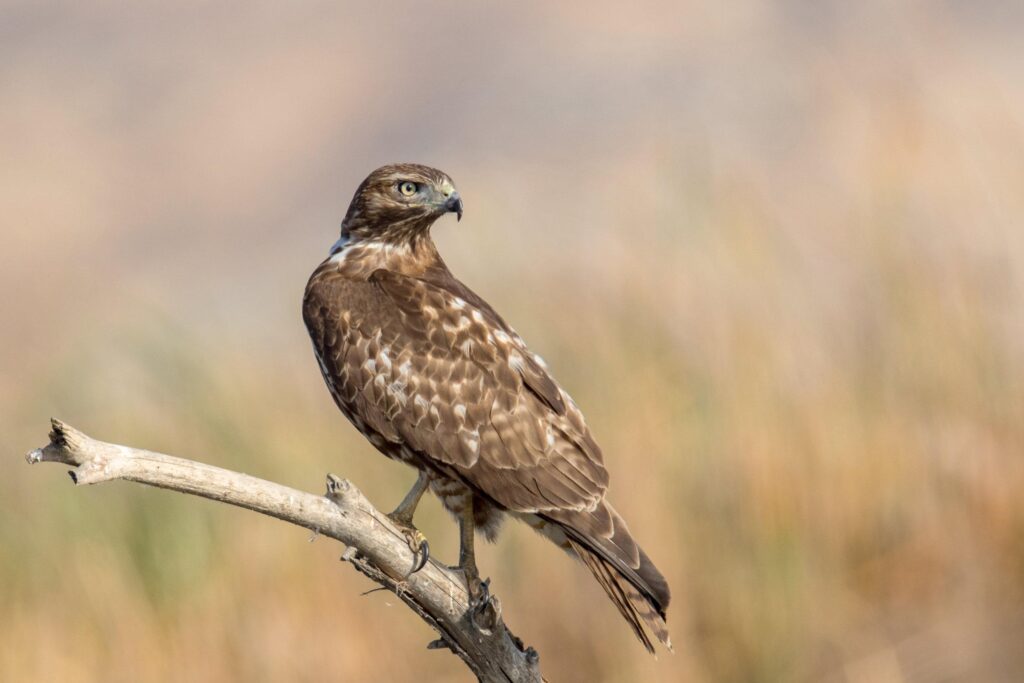
Known for its distinctive red tail, the Red-tailed Hawk is one of the most common hawks in North America, often seen perched along highways or soaring in circles overhead.
- Common Name and Scientific Name: Red-tailed Hawk, Buteo jamaicensis
- Physical Description: Large bird of prey, noticeable by its broad, rounded wings and short, wide tail that is rich red above.
- Habitat: Open country, woodlands, prairie groves, and mountainous regions.
- Geographical Range: Widespread across North America.
- Interesting Facts: They are known for their incredible eyesight and can spot a mouse from 100 feet up.
3. Red-winged Blackbird

The Red-winged Blackbird is a striking bird with its sharp call and bold red and yellow shoulder patches. It is often found calling from atop reeds and signaling territory with its song.
- Common Name and Scientific Name: Red-winged Blackbird, Agelaius phoeniceus
- Physical Description: Males are all black with a red and yellow shoulder patch, while females are brownish and streakier.
- Habitat: Common in wetlands, marshes, and meadows.
- Geographical Range: Resides across North America and parts of Central America.
- Interesting Facts: Males are polygynous, often having several mates during breeding season.
4. Rock Pigeon
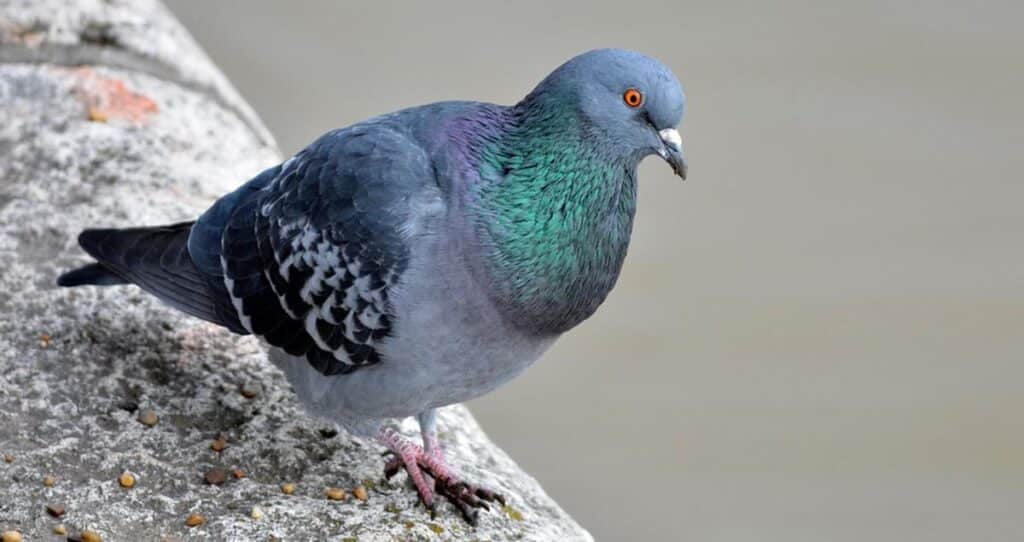
Often seen in city squares and parks, the Rock Pigeon is famous for its varied colors and adaptability. Originally cliff dwellers, these birds have thrived in urban environments.
- Common Name and Scientific Name: Rock Pigeon, Columba livia
- Physical Description: Stout body with a short neck and variable colors from gray to white and even black; iridescent neck feathers.
- Habitat: Urban areas, cliffs, and agricultural regions.
- Geographical Range: Found worldwide, originating from Europe, North Africa, and southwestern Asia.
- Interesting Facts: They were among the first birds domesticated by humans and were used historically to carry messages.
5. Roseate Spoonbill

The Roseate Spoonbill stands out in its marshy habitat with its distinctive spoon-shaped bill and stunning pink plumage. This bird’s diet results in its color resembling that of flamingos.
- Common Name and Scientific Name: Roseate Spoonbill, Platalea ajaja
- Physical Description: Large bird, pink body, white neck, and a unique flat, spoon-shaped bill.
- Habitat: Coastal lagoons, marshes, and mangroves.
- Geographical Range: Found in the southeastern U.S., Central America, and South America.
- Interesting Facts: Their pink coloration comes from the carotenoids in their diet of crustaceans and other aquatic invertebrates.
6. Redhead
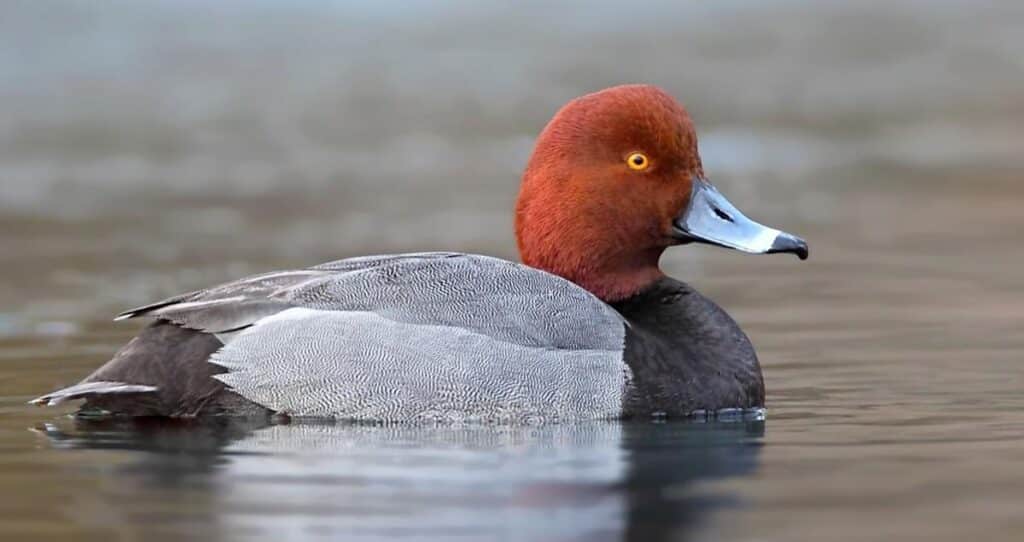
The Redhead is a medium-sized diving duck with a rounded head and a bright redhead on a gray body. It is often found in large flocks in the winter.
- Common Name and Scientific Name: Redhead, Aythya americana
- Physical Description: Medium-sized duck males have a reddish head and bright blue bill during breeding season.
- Habitat: Lakes, marshes, and coastal bays.
- Geographical Range: Breeds in the northern U.S. and Canada; winters in the southern U.S. and Mexico.
- Interesting Facts: They often lay their eggs in the nests of other ducks, especially Canvasbacks.
7. Ruby-throated Hummingbird

The Ruby-throated Hummingbird is a marvel of aerodynamics known for its dazzling flight skills and preference for nectar. This tiny bird vibrates its wings in a blur, hovering effortlessly at flower blossoms.
- Common Name and Scientific Name: Ruby-throated Hummingbird, Archilochus colubris
- Physical Description: Bright emerald or golden-green on the back and crown, with gray-white underparts.
- Habitat: Open woodlands, gardens, meadows, and parks.
- Geographical Range: Eastern North America, migrating to Central America in winter.
- Interesting Facts: They can beat their wings 53 times a second and cross the Gulf of Mexico in a single flight.
8. Ring-necked Pheasant
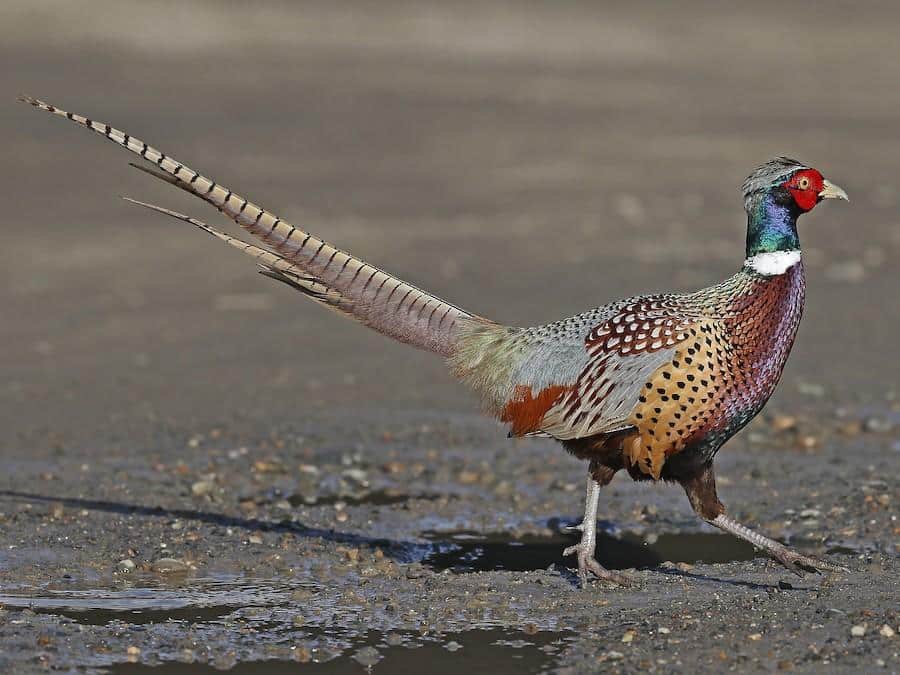
The Ring-necked Pheasant, introduced in North America, is admired for its dazzling colors and long, pointed tail. These birds are popular among hunters and bird watchers alike.
- Common Name and Scientific Name: Ring-necked Pheasant, Phasianus colchicus
- Physical Description: Males are highly decorated with iridescent copper and gold plumage, a white ring around the neck, and a long, pointed tail.
- Habitat: Farmlands, fields, and grassy areas.
- Geographical Range: Widely found across North America, especially in the Great Plains.
- Interesting Facts: Originally native to Asia, they were brought to North America for hunting but have since become a common sight in many areas.
9. Ring-billed Gull

The Ring-billed Gull is commonly spotted around lakes, rivers, and coastal areas. This bird is known for its resourcefulness and adaptability, thriving in natural and urban settings.
- Common Name and Scientific Name: Ring-billed Gull, Larus delawarensis
- Physical Description: Medium-sized gull with a short yellow bill with a black ring; pale gray body; white head and underparts.
- Habitat: Lakes, rivers, beaches, fields, and parking lots.
- Geographical Range: Found throughout North America, particularly near bodies of water.
- Interesting Facts: Known for their loud, raucous calls, they are often seen scavenging at dumps or snatching food at beaches.
10. Red-breasted Nuthatch

The Red-breasted Nuthatch is a small, agile bird known for its ability to climb down trees headfirst and for its distinct nasal call. This bird is a delight to watch as it maneuvers through coniferous woods.
- Common Name and Scientific Name: Red-breasted Nuthatch, Sitta canadensis
- Physical Description: Compact body with a sharp bill, blue-gray upper parts, and a rust-colored breast.
- Habitat: Coniferous forests are preferred but can be found in mixed or deciduous woods.
- Geographical Range: Found across much of North America.
- Interesting Facts: They smear tree sap around the entrances to their nests to deter predators.
11. Rufous Hummingbird

Among the most spirited hummingbirds, the Rufous Hummingbird is fiercely territorial and known for its incredible long-distance migratory pattern.
- Common Name and Scientific Name: Rufous Hummingbird, Selasphorus rufus
- Physical Description: Bright orange males and green-and-orange females; extremely agile fliers.
- Habitat: Open areas, gardens, and woodlands, often at higher elevations.
- Geographical Range: Breeds in the Pacific Northwest and migrates to Mexico for winter.
- Interesting Facts: They have the longest migration route of any hummingbird in terms of body size, traveling up to 4,000 miles round trip.
12. Red-shouldered Hawk
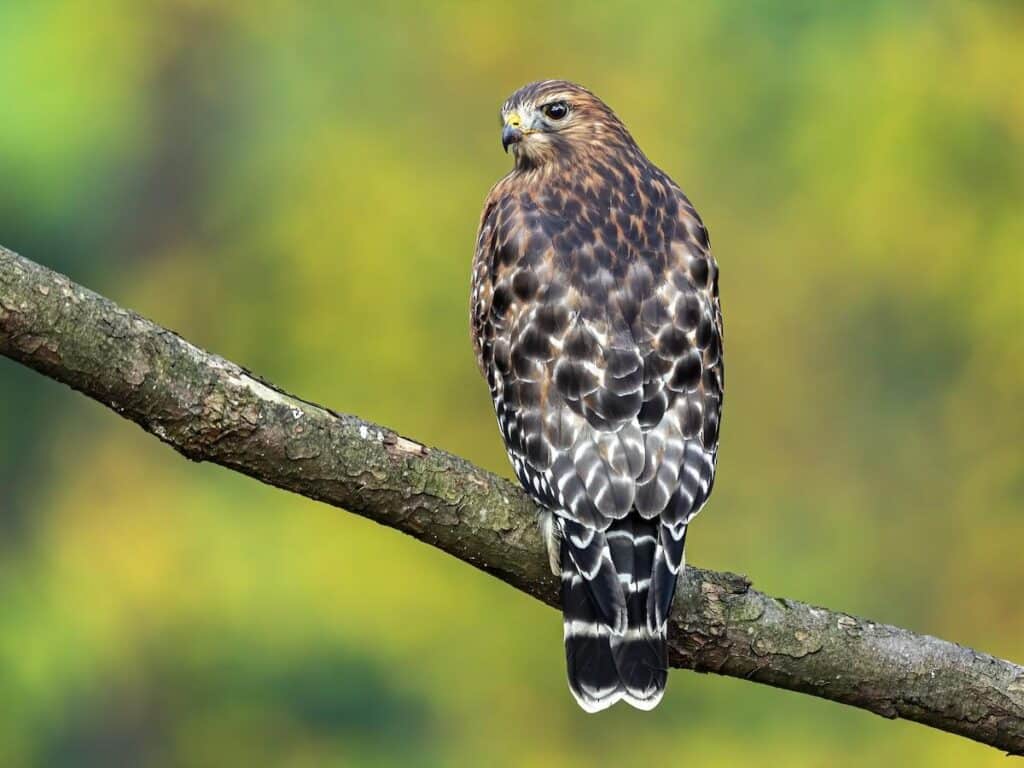
Noted for its distinctive, loud call and striking red shoulders, the Red-shouldered Hawk is a medium-sized predator often seen perched in woodland areas.
- Common Name and Scientific Name: Red-shouldered Hawk, Buteo lineatus
- Physical Description: Characteristic reddish-brown shoulders, white and dark banding on the tail and wings.
- Habitat: Woodlands and riparian forests.
- Geographical Range: Found mainly in the eastern U.S., extending to parts of California and northern Mexico.
- Interesting Facts: Known for their sharp, piercing calls, they are more vocal when defending their territory during the breeding season.
13. Red-throated Loon

The Red-throated Loon is a diving bird known for its sharp, pointed bill and striking red throat patch during the breeding season. It is smaller and more agile in flight compared to other loons.
- Common Name and Scientific Name: Red-throated Loon, Gavia stellata
- Physical Description: Smallest of the loon family, with a sleek profile and red throat patch during breeding.
- Habitat: Northern lakes during breeding; coastal waters in winter.
- Geographical Range: Breeds in Arctic regions; winters along both the eastern and western coasts of North America.
- Interesting Facts: Unlike other loons, the Red-throated Loon can take off from land and water.
14. Rough-legged Hawk
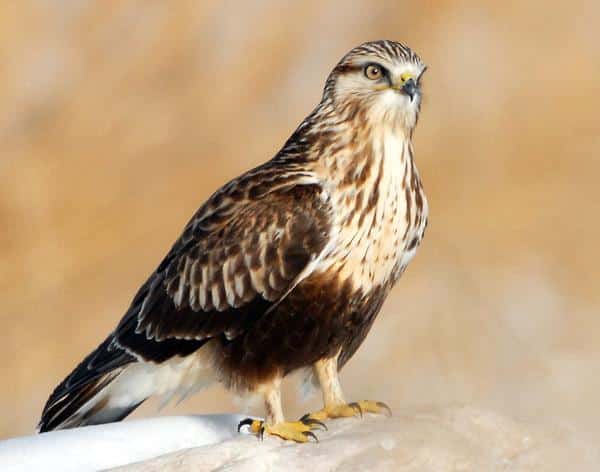
The Rough-legged Hawk, named for its feathered legs, is a visitor from the Arctic tundra. It is known for its hovering flight, which it uses when hunting over open fields.
- Common Name and Scientific Name: Rough-legged Hawk, Buteo lagopus
- Physical Description: Large hawk with feathered legs down to the toes; varies from light to dark morphs.
- Habitat: Open tundras and fields, often perching on poles or trees.
- Geographical Range: Breeds in Arctic regions; winters throughout much of the northern U.S. and southern Canada.
- Interesting Facts: They can hover in place even without wind, a trait shared with few other birds of prey.
15. Ruddy Duck

Known for its stiff tail and bright blue bill during the breeding season, the Ruddy Duck is a small, stout diving duck that often appears skittish when approached.
- Common Name and Scientific Name: Ruddy Duck, Oxyura jamaicensis
- Physical Description: Compact, bright chestnut body in breeding plumage; distinctive blue bill.
- Habitat: Lakes and marshes.
- Geographical Range: Found throughout North America, wintering as far south as Central America.
- Interesting Facts: Ruddy Ducks often sink silently into the water rather than fly away when alarmed.
35 Additional Birds Starting with R
- Red-faced Warbler
- Red-necked Phalarope
- Red-footed Falcon
- Red-billed Tropicbird
- Red-billed Quelea
- Red-crested Cardinal
- Reddish Egret
- Red-crowned Crane
- Red-bellied Woodpecker
- Red-cockaded Woodpecker
- Red-capped Manakin
- Razorbill
- Ringed Kingfisher
- Rose-ringed Parakeet
- Rock Wren
- Reed Bunting
- Roseate Tern
- Red-billed Pigeon
- Red-billed Firefinch
- Red-whiskered Bulbul
- Ringed Teal
- Rufous-tailed Jacamar
- Rufous-crowned Sparrow
- Red-vented Bulbul
- Red-naped Sapsucker
- Rose-breasted Grosbeak
- Ross’s Goose
- Royal Tern
- Royal Flycatcher
- Ruby-crowned Kinglet
- Ruddy Turnstone
- Ruff
- Rufous-bellied Heron
- Rufous Fantail
- Rusty Blackbird
Summing Up
Did you know there are over 10,000 bird species, each with unique traits?
As we’ve seen, the birds that start with R showcase various colors, behaviors, and habitats.
From the well-known Robin to the graceful Red-throated Loon, each species plays an important role in the ecosystems they inhabit.
Understanding these birds better gives us a deeper appreciation for the natural world.
Whether common or rare, these birds remind us of the beauty and diversity found in nature.
We hope this list inspires you to explore and learn more about these wonderful creatures.



